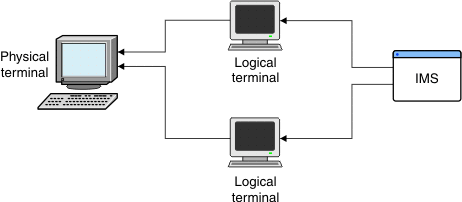Designing logical terminal networks
The IMS system definition describes the characteristics and relationship of communication lines, static terminals, and logical terminals (LTERMs).
For a nonswitched terminal, the relationship between a physical terminal and a logical terminal within IMS is a static relationship defined during system definition.
When only one user operates a physical terminal, only one logical terminal is associated with that physical terminal. If multiple users operate a physical terminal, the terminal is associated with many logical terminals.
You can structure the IMS system definition so that a separate logical terminal is assigned for each user of a particular static terminal.
Definitions: The information in this topic uses physical terminal to represent anode, for VTAM® devices.
Logical terminals can be assigned to physical terminals for both input and output. When a logical terminal is assigned to a physical terminal for output, all messages that are sent to that logical terminal are transmitted to its associated physical terminal. More than one logical terminal can be assigned to a given physical terminal for output. Only one physical terminal can receive the output for a given logical terminal. The relationship between physical and logical terminals for output is shown in the following figure.
